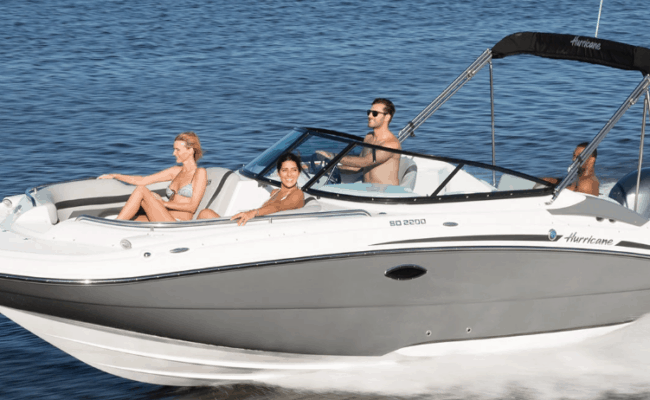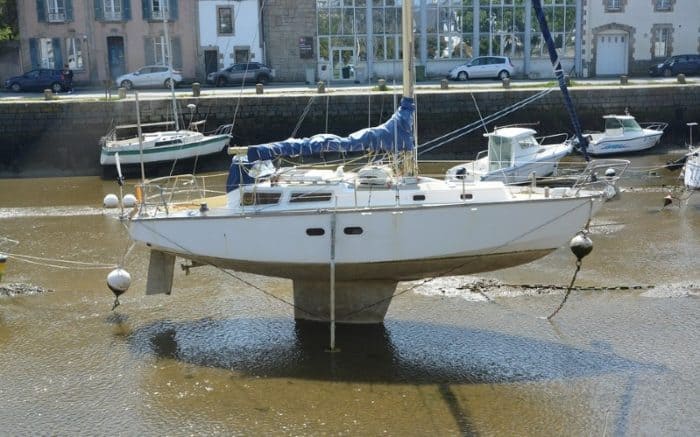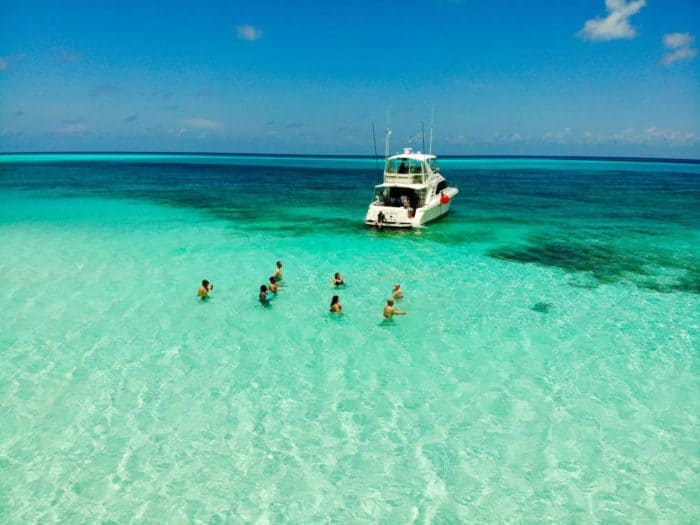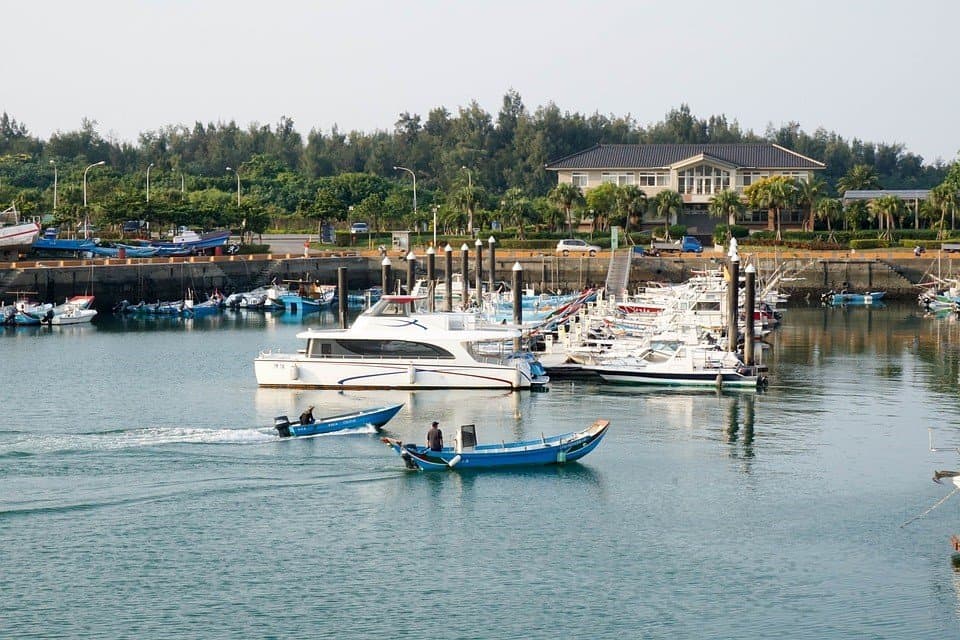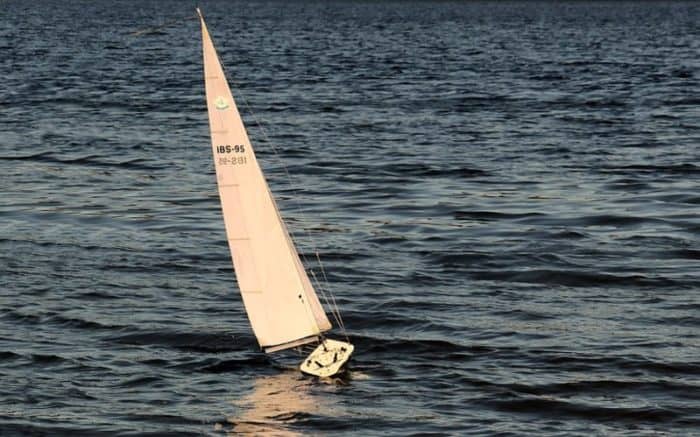The Basics of Boat Parts and Terms
The boating world operates on a different level than your day to day life. Boating has been a part of human history for literally thousands of years. That’s part of the reason why boating terms are so unique. Most boating terms represent a long history of the activity. There are specialized parts of a boat and terms to explain everything to do with boating. For a newcomer, this can be difficult to understand. Even seemingly simple things like left side and right side change on a boat. For that reason, it’s good to familiarize yourself with the basic boating terms. Understanding boat terminology will allow you to understand other boaters more easily.
Sides of a Boat
In normal life you’d call the front of a boat the front. The left side of a boat is the left side. But that is not proper boating terminology. Parts of a boat as simple as the front, back and sides all have their own names.
Front of a Boat: This is called the bow of the boat.
Back of the Boat: This is called the stern of the boat.
Left Side of the Boat: This is called the port side of the boat.
Right Side of the Boat: This is called the starboard side of the boat.
Why are the hull sides named differently? Well, imagine two people boating. The direction each may face matters. One is facing forward and one is facing the back. For them, the left sides and right sides are different. You tend to orient left and right to yourself. It’s your left and your right. The boat is oriented to itself. The port is always the boat’s left, no matter what direction you are facing. This prevents confusion in boating.
Directions on a Boat
When you’re boating, you may need to point out hazards or other features. You don’t want to say something like “there’s another boat dead ahead.” A person can face a different way and need to orient to you to follow that direction. Directions based on the boat will always be constant and easy to understand. That way you can face any side of a boat.
- To the front of the boat: If you need someone to move to the front or look to the front, they’re heading forward.
- To the front left: Anything in this direction is off the port bow. Port is left, and the bow is in front.
- To the front right: Anything in this direction is off the starboard bow. Starboard is right, and the bow is in front. Starboard comes from Old English. Steor meant steer. Bord meant the side. Because most sailors were right handed, they steered on the right side.
- To the left: Directly to the left on a boat is abeam to port. The beam is the widest part of the boat, a sort of centerline.
- To the right: To the right of the boat is abeam to starboard.
- To the rear left: In this direction you’re referring to something off the port quarter.
- To the rear right: Anything here is off the starboard quarter.
- Behind the boat: When you are heading or looking in this direction on a boat you are going to call it aft.
Basic Parts of the Boat
There are a lot of different types of boats on the water. A massive cruise ship and a small fishing boat don’t have a lot in common. Likewise, a jet boat and a sailboat have clear differences. That said, there is some boat terminology that applies to every boat.
Anchor: An anchor is any heavy item attached to a line meant to moor a boat. Most people, when they hear the word anchor in English, think of the stereotypical shape. However, a true anchor may come in several shapes. It is the function of the anchor that is more important than the visual design. An anchor and a sea anchor are two different things.
Anchorage: This refers to an area that is suited for anchoring your boat.
Amidships: The average boater is not using this term very often. However, it may still be used formally. Or by a very serious boater. Amidships refers to the center section of a boat.
Ballast: This is anything added to a boat to give it weight. In some boats, ballast may just be water. In others it can be stone or metal. It increases a boat’s stability.
Beam: This is the imaginary line that extends from port to starboard. It is the widest part of the boat.
Bilge: The bane of many a boater is the bilge. This is the lowest part of the boat and is where water tends to collect. In larger boats, this can become very polluted and will need to be cleaned regularly. A bilge pump is installed in the bilge to assist with getting that water out.
Bimini: This refers to a kind of canvas covering, or even a hardtop that can protect the boat from rain or sun.
Boom: The horizontal pole attached to the mast. It extends the foot of the mainsail.
Bulkhead: Bulkheads are the vertical walls on the sides of the boat. Not every boat is large enough to have a significant bulkhead. However, if the hull is large enough, then the walls would be considered bulkheads. They are attached to the hull but are not the hull itself.
Cabin: This is a room inside the boat. Small boats obviously do not have room for a cabin. The entire space inside a boat may be considered the cabin. Or it may be a small section designed to serve as living quarters.
Casting Deck: Some boats feature this elevated part of a deck. It can be either at the bow of the boat or the stern of the boat.
Cleat: A cleat is usually a metal fitting that looks like a small T with a long cross piece. It can also be made of wood or plastic. These are found both on boats and on docks. A cleat is used for securing a boat. You can tie or loop a rope around a cleat to secure a boat in place.
Cockpit: An enclosed area around the helm. Bigger fishing vessels and yachts will have cockpits.
Companionway: This is the entrance from the deck into the cockpit or deck from the cabin.
Console: Sometimes a helm will feature a console. This is a raised platform where the boat controls may be located. Depending on the size of the boat, there may be storage below the console.
Deck: This is the flat surface of the boat that you can stand on. Technically, not every boat has a deck. For instance, even though you can stand in a canoe, you wouldn’t call that the deck.
Dodger: This is a canvas structure that is supported on a frame. It covers the cockpit and part of the companionway. It is similar to a Bimini top and protects the helmsman from rain and sun. A dodger will usually have vinyl windows but, unlike a Bimini, is not a hardtop.
Foot: This is the bottom edge of a sail.
Fender: Boat fenders are usually made of something like rubber or foam. They work like bumpers. You would use them to cushion any impact as you go in or out of a dock. Fenders can be tied to cleats or rails with rope to prevent damage to both the boat and the dock. A fender can also be handheld by a member of the crew or a boater as well. They are not permanently affixed to the boat.
Galley: The kitchen area on a boat is called the galley. This is where food preparation takes place. Typically, only larger boats would have a galley.
Gunwale: The gunwale is the outside, top edge of your boat. If you have a deck on the boat, the gunwale is where it meets the hull. To most people, the gunwale would just be considered the edge of the boat.
Halyard: This is a line or rope used to hoist a sail.
Hatch: A hatch on a boat is a kind of covering. Any window, portal or door can be covered by a hatch. Typically, the hatch refers to the covering that gives access to the living quarters. A storage area can also be covered by a hatch.
Head: In nautical terms, this is how you refer to a bathroom. Sometimes you’ll hear this used as slang on dry land as well. People will say they’re going to “hit the head” which means use the washroom.
Helm: This is the control station of the boat. A steering wheel or stick is located at the helm. It’s like the driver’s seat of a car. Whoever is at the helm and in control of the boat is, by definition, the helmsman. Or helmsperson.
Hull: This is the body of the boat. If your boat had no sails, no motor, no seats or anything else, it would still have a hull. A hull can be as simple as a hollowed out log. It’s just the framework that holds everything else in and allows it to float.
Inboard Motor: Also called an inboard engine. Unlike an outboard engine, this is located amidships. The propeller is run down through the bottom of the hull. This kind of engine is not immediately visible on a boat.
Jib: This is a triangle-shaped sail. It projects ahead of the mast and is easily identifiable.
Keel: This is under your boat and not visible when it’s in the water. In some boats the keel is extremely large, like a shark fin. It extends from the bow to the stern but may be much longer in the middle. It helps stabilize the boat to prevent sideways movement. It also holds ballast to keep a boat upright. Not every boat has a large keel and some will have no keel. These have a flat hull bottom You need to know what depth your keel extends to.
Kill Switch: This is a safety feature on a boat. It is typically a kind of lanyard attached to the driver of the boat. If the lanyard pulls away from the console, the kill switch activates. It immediately shuts off the engine as a safety precaution.
Lifelines: This line runs from the mast to the stanchions. They are a safety feature, as the name indicates. Boaters and passengers can support themselves on lifelines to avoid falling overboard.
Livewell: This is something you’ll find on a fishing boat. It’s a storage area filled with water. Fish can be stored in here so they will stay alive.
Luff: This is the leading edge of a sail
Mainsail: As the name suggests, this is the main sail on a boat. It will be the largest of the sails.
Mast: A large vertical pole that holds up the sails of a sailboat.
Mizzen mast: Some boats may also have a mizzen mast. This is a smaller mast located aft of the mainmast.
Multihull: Some boats will have more than one hull. As such, these are called multihull boats. An example of this is a catamaran.
Navigation Lights: The navigation lights on a boat are used to prevent collisions at night. You can find the red and green navigation lights on the port side of the boat and the stern side of the boat. This is called a bi-color light. It is usually at the bow. A boat may also have a tri-color navigation light as well. This may be at the stern sometimes. These navigation lights include a white light directed at the stern of the boat. Every side of a boat needs to have a light visible on the water.
The navigation lights help you understand right of way. A boat approaching your starboard side sees a green light. That means they have the go ahead. A boat approaching your port sees a red light. That means you have the go ahead and they need to stop or change course.
Outboard Motor: An outboard motor is a motor attached to the transom. These are the most easily identifiable types of boat motors. You can easily see an outboard motor from off the boat.
PFD: This stands for personal flotation device. Typically, that means a life jacket. Every passenger on a boat should have access to the proper types of life jackets.
Propeller: Also called a prop. This is the rotating blade part of a boat motor. A prop can spin either clockwise or counterclockwise. These can be exceptionally dangerous.
Pulpit: This is a guard rail that you will find at the bow or stern. Lifelines are typically affixed to the pulpit.
Rigging: Rigging is most prominent on a sailboat. It refers in a general way to all the lines and rope needed to support the sail and mast.
Rub Rail: This is a protective bumper or bar. It runs around the outside of a boat where the top deck and hull come together. It can help prevent someone falling over the side.
Rudder: The rudder is located below the waterline. In simple terms, it is little more than a flap. Maneuvering the rudder will change the direction of the boat. It operates very similarly to a fish’s tail.
Sea anchor: A sea anchor is different from a regular anchor. A sea anchor is sometimes called a drift anchor or boat brake. In bad weather, a sea anchor may be set to drift in the sea behind the boat. The sea anchor is not meant to sink below the waterline like a regular anchor. Instead, the sea anchor provides drag. This helps stabilize the boat in the water. It also slows it down.
Many smaller boats will have only a regular anchor. A Sea anchor is typically found in faster boats or larger ships. A sea anchor sometimes looks like a parachute or net being dragged.
Sheet: This is the line that is used to trim a sail.
Shroud: This is support rigging for a mast. It is a wire that runs from the side of the boat to the mast.
Stanchion: This is a metal post on a boat. Its purpose is to support lifelines.
Sterndrive: Sometimes called inboard/outboard engine or just I/O engines. This is an inboard engine with a steerable unit that extends through the transom.
Stowage Locker: A stowage locker or storage locker may also be called a lazarette. It is usually near the aft part of a cockpit. As the name suggests, it’s for storing gear.
Swim Platform: The swim platform is a flat surface attached to the transom or somewhere on the aft of the boat. It makes it easy for passengers to get on and off the boat. This is especially true if they’ve been swimming or fallen overboard.
Tiller: This is a bar or handle used in boat steering. It is directly connected to the rudder. That means as you move the tiller, the rudder will also move and change the boat’s direction.
Transom: The transom is the part of your boat at the rear that extends up from the bottom of the hull. It connects the two sides of your hull together. The transom is the vertical surface at the stern of the boat that holds the outboard motor. The name of the boat is also usually displayed on the transom.
T Top: Not unlike the T Top of a car. This is designed to hold up canvas or some other covering to protect the captain of the boat while sailing.
V Berth: The word berth typically refers to a resting place. This can be where the boat itself is berthed in a marine or, in the cast of a V Berth, a thing on the boat itself. This is a bed in the lower portion of the bed which is shaped like a V, hence the name.
VHF: This refers to the radio on a boat. There are specific nautical use channels for a VHF transmitter that boats are meant to use. The marina as well as the Coast Guard will monitor these channels in case of an emergency.
Waterline: This is the portion of the boat where the hull and the surface of the water meet. The heavier the boat, the higher up on the hull the waterline will be.
Winch: This is a rotating drum that is used to reel in or let out a line. Wires, chains and ropes can all be winched. Boaters can hoist or trim the sail by using a winch on the line. It allows them to let out or take in the sheet or halyard. Using a winch allows you to do this faster. It also provided additional leverage and strength. Typically, you pull in a line by hand as far as possible, then switch to a winch.
Boating Terminology
There are additional boating terms that refers to aspects of boating. These aren’t necessarily parts of the watercraft. Instead, these are terms that refer to the act of boating, or aspects of it.
Adrift: If a watercraft is on the water but not being controlled, it is adrift. An abandoned boat at sea would be adrift. However, a boat can still have crew and passengers but be adrift. This happens if they have lost the ability to steer or otherwise maneuver.
Ahead: When a boat is moving forward it is said to be moving ahead.
Aground: If the bottom of the hull has come in contact with the bottom of the water. Likewise, if it has come up on shore, a boat can run aground intentionally or by accident.
Astern: When a boat is in reverse, it is not going backwards according to boat lingo. Instead, you would use the term astern.
Bail: This is the term used to describe removing water from a boat. If you’re taking on water quickly because of poor weather or a leak, you need to bail. This can be done with a bucket or even by hand.
Bear Off: If you are turning the boat away from the wind, you are bearing off.
Bearing: The bearing of the boat is the direction that you are heading, measured in degrees of an angle.
Bridge Clearance: This is the distance from the waterline to your boat’s highest point. If you have a sailing vessel with a large mast, you will have a high bridge clearance.
Cast Off: When you release all the lines holding a vessel in place in preparation for leaving.
Charts: This refers to maps. Whether they are paper or electronic, nautical maps are called charts.
COLREGS: This is the term that the US Coast Guard uses to refer to the rules of the road. The official name is the International Regulations for Preventing Collisions at Sea.
Course: This is the path you intend to take on your destination.
Draft: The draft of the boat is important for understanding water displacement. It refers to the distance from the waterline to the bottom of the hull. The heavier a watercraft is, the greater the draft it will have. It is important to know the draft of your boat. It’s required to understand the minimum depth of water that you can travel safely. If you can’t navigate at that depth, it could cause an accident.
Freeboard: Freeboard is the opposite of the draft. It is the distance from the waterline to the upper deck of the boat. If the freeboard of a vessel is too low, it may capsize. You can avoid this by not overloading your boat.
Give way craft: A boat that does not have the right of way in navigation is the give way craft. This vessel will need to alter course or speed to let the stand on craft go.
Gybe: Also spelled jibe. This is when you change direction on a sailboat and cause the boom to swing to the other side.
Heading: This is the direction the boat is travelling at any given moment. Your course is always fixed to a specific destination. Your heading may change constantly along the course.
Headway: Forward motion of a vessel is called headway. If you’re heading forward, you are making headway.
Heeling: This is when a sailboat leans over in the water. It is caused by wind pushing on the sails. It’s safest to be on the windward side of the watercraft.
Knot: When travelling in a boat, knots are the unit used to measure speed. It is measured in nautical miles per hour. One knot = 1.15 miles per hour. Occasionally this is rounded to 1.2 miles per hour.
Leeward: This is the direction opposite of where the wind is blowing. .
Make fast: If the captain on a boat says this, it is an instruction. Make fast means to secure a line.
Nautical mile: Nautical miles are different from surface miles. A nautical mile measures 6,076.12 feet or 1,852 meters. A nautical mile is different from a mile.` It represents one minute of latitude on a navigation chart.
Power-drive vessel: This refers to any vessel that operates under power. That means anything with a motor. It can also refer to a sailboat if the sailboat also has a motor. Non-power driven vehicles include sailboats that are not under power. Also, small vessels like canoes or kayaks.
Right of Way: This refers to the rules of the road for boating. The right of way, just like in driving a car, refers to who gets to go first when two boats meet. Generally, sailing vessels will have the right of way over motorized vehicles. This is true of other non-motorized vessels as well. If a boat approaches you from port, you will have the right of way. If it approaches from your starboard, you need to give way to that vessel.
Rules of the Road: This refers to the standard set of rules that govern boat navigation. Right of way, signals, lights, and warning sounds are all covered in the rules of the road.
Stand on Craft: A vessel with the right of way in navigation is said to be the stand on craft. This vessel can maintain speed and course.
Tacking: When you maneuver the bow of the boat you are tacking. In a sailboat you will tack the boat through the wind. This causes the wind to shift from one side of the vessel to the other. It creates a zig zag motion.
Topside: If you are heading from below decks on a boat to the main deck, you are going top side.
Wake: The waves that are created by a vessel in motion are called the wake.
Weigh Anchor: When you pull an anchor back into the boat you are weighing anchor.
Windward: This is the direction that the wind is blowing.
Categories: Boats
